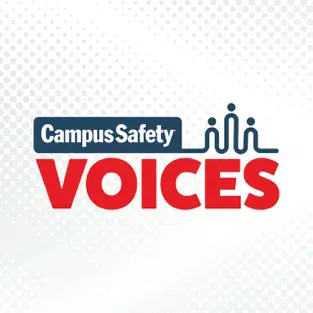For decades, parents have taught their children “The Golden Rule:” Treat others the way you want to be treated. However, as adults with various life stressors and responsibilities, we often forget to follow that adage ourselves.
It’s no secret that if we treat others with empathy and respect, the response is more likely to be positive. This applies to nearly all service industries but is especially true for those that provide care for others. That’s why Calvin Millar, Director of Public Safety and Parking Services at William Osler Health System in Brampton, ON, Canada, chooses to focus on customer service as a means to reduce workplace violence.
Millar, a 2023 Campus Safety Director of the Year finalist, has drawn from personal experiences in both hospital and non-hospital settings to improve customer service throughout the system.
Traditionally, says Millar, hospital violence prevention training has focused on de-escalation, intervention, containment, and restraint. However, once a situation requires de-escalation, there’s already a possibility that it could turn into a violent encounter.
“Taking a look not just at healthcare but other industries, what do they do? What different things do I observe by walking into a restaurant or walking into a store? Customer service seemed to be the root cause or the root solution to a lot of these things,” he told Campus Safety. “When you go into a place and you’re treated with respect and you feel valued, you feel like someone is caring for you, it’s really hard to get upset or stay escalated if you walk in that way.”
Naturally, Millar says, it’s not going to work for every situation, but it is something he has embedded in his staff as a means to keep an encounter from escalating.
“For example, somebody walks in, greeting them and saying hello. Instead of finger-pointing, use open-handed gestures,” he described. “When somebody is looking for a place to go, instead of just providing them the directions in buildings that we have so complexly designed, walk them there or have someone walk them there if they need extra assistance.”
Millar says these small actions have helped his team build rapport with patients — especially patients and families they see multiple times for complex medical issues where emotions and frustration can run high. Although measuring the success of these practices is difficult since it’s hard to measure an incident that didn’t occur, Millar has been able to do so by comparing how patients or visitors are approached and the subsequent outcome.
“When I review these communications anecdotally, I can see [the difference] when we have positive staff approaches [compared to] when somebody approaches those folks in a negative manner, or even in a neutral manner, where somebody is looked at as a number — where it’s not a negative experience, it’s not a positive experience, it’s just, ‘Okay, you’re next.’ There isn’t that human connection,” he said. “So that’s where we’ve really developed our program.”
[promo_content slug=”2023-doy-winner-announced-at-csc”]
Millar has also been able to improve customer service by drawing on personal experiences within the healthcare system. His best friend turned brother-in-law was diagnosed with cancer at the age of 30, and was in and out of hospitals for two years before he passed away.
“Some of [the hospitals] were amazing and some of them not so much, [but] I had some really positive experiences,” he said. “I remember one evening we had a lot of family there. The guard came up and his job was to lock up the rooftop terrace right beside my friend’s room. He came up to us and said, ‘Listen, my job is to lock this up. Are you guys going to be here through the night? You want me to leave it open?’ A really small gesture, but something that meant a lot to all of us. Those little moments, those little opportunities that we can give somebody really can help shape and make a difference.”
“You may be having a negative experience,” he continued, “but you don’t have to have a negative experience around that negative experience.”
Millar also stressed healthcare employees need to treat patients and visitors with respect — even if it’s not given to them in return.
“I still hear people who work in healthcare and other industries say, ‘Well, respect isn’t given, it’s earned.’ That’s true to a point, but it’s not true when we’re here to serve,” he said. “We don’t have to wait until that person earns our respect — that should be our default setting. We should be creating a welcoming, compassionate, empathetic, respectful workplace, not just for us to work within, but for the people who we want to serve to come and be part of.”
An additional benefit to providing top-notch customer experience at all times, says Millar, is funding.
“With the Canadian healthcare system, we rely heavily on private donations to help us,” he said. “The unintentional byproduct is when we create positive experiences for people, they then feel a part of things and in turn may decide to become donors and maybe decide to help sponsor the organization and help us get to that next level. It’s truly a partnership that we need to establish with our community.”
Millar emphasized that the system’s goal is never to increase donations. Instead, “Our goal is to become in line with our mission, visions, and values of [helping] patients and families and just treating people like human beings.”
In our discussion, Millar also talked about:
- How he has been able to measure the success of customer-centric service (9:51)
- His own mental health nursing background and how it was helpful in establishing a workplace violence prevention program (11:10)
- Additional training opportunities offered to his security team (13:36)
Watch the full interview here or listen on the go on Apple or Spotify.









